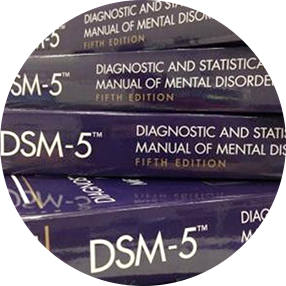Generalized Anxiety Disorder (GAD)
What is generalized anxiety disorder?
If you tend to worry a lot, even when there’s no reason, you may have generalized anxiety disorder (GAD). GAD means that you are worrying constantly and can’t control it. Healthcare providers diagnose GAD when your worrying happens on most days and for at least 6 months. GAD is one of the most common mental disorders in the U.S.
Worrying may be something you are so used to. You may think it’s just how you are. Common worries include your health, money, family, or work. Everyone worries about these things once in a while. But if you always expect the worst, it can get in the way of living a normal life.
GAD begins slowly, often in childhood or the teen years. But it can begin in adulthood, too. It’s more common in women and often runs in families.
If you have GAD, you may also have another mental health condition such as depression.
What causes GAD?
GAD can develop when you can’t cope well with your internal stress. But it’s not clear why some people get it and others don’t. Experts have shown that the areas of the brain that control fear and anxiety are affected.
Sometimes the symptoms of GAD can happen as a side effect of a medicine or of substance abuse. It can also be linked to health conditions (such as hyperthyroidism) that increase hormones. This can make the body response more excitable. GAD can be triggered by family or environmental stress. Long-term (chronic) illness and disease can also trigger GAD.
What are the symptoms of GAD?
If you have GAD, you likely know that your anxiety is more intense than the situation calls for. But still you can’t stop these unfounded concerns. Each person’s symptoms may be a bit different. But these are the most common symptoms:
- Trouble falling or staying asleep
- Trembling
- Twitching
- Tense muscles
- Headaches
- Grouchiness
- Sweating
- Hot flashes
- Lightheadedness
- Trouble breathing
- Upset stomach (nausea)
- Urinating often
- Lump in the throat
- Extreme tiredness (fatigue)
- Trouble focusing
- Being easily startled
- Unable to relax
The symptoms of GAD may seem like other mental health conditions. Always see your healthcare provider for a diagnosis.
How is GAD diagnosed?
Your healthcare provider or mental health provider diagnoses GAD. They can help figure out if your symptoms are linked to another problem. The symptoms happen on most days and last 6 months or longer.
How is GAD treated?
Treatment will depend on your symptoms, age, and general health. It will also depend on how severe the condition is.
Treatment may include:
- Medicine
- Counseling (cognitive behavioral therapy, or psychotherapy)
- Relaxation methods
- Working with a therapist to boost coping skills
- Making lifestyle changes to reduce stress and stay away from stimulating substances. This can often include exercise. Also seek help with quitting smoking, or drug or alcohol use.
Contact Dr. Fogelson’s office to schedule an appointment for a Generalized Anxiety Disorder (GAD) evaluation.
*UCLA Adult Health Library Generalized Anxiety Disorder (GAD)

